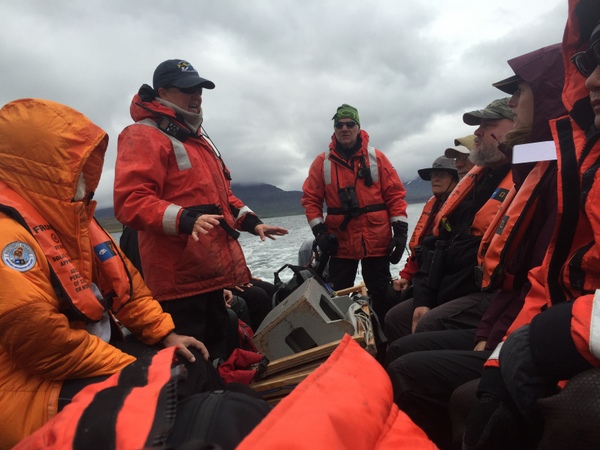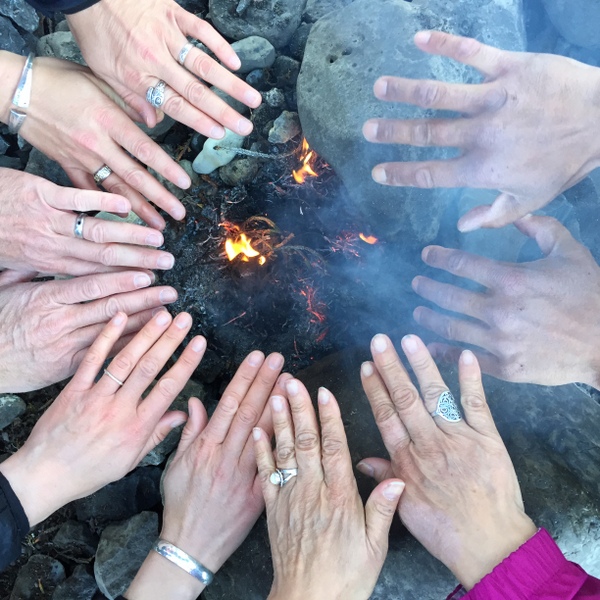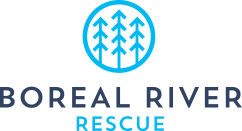5 Soft Skills to Make you a Better Adventure Guide
By Jennifer Kingsley, a writer and guide based in Ottawa, Ontario. Jennifer is the founder of Meet the North and the author of Paddlenorth: Adventure, Resilience, and Renewal in the Arctic Wild.
In the guiding world, there is a lot of emphasis on hard skills including first aid and rescue techniques. This makes good sense—we need to know what to do when things go south—but it’s critical to remember that we want to prevent problems from developing in the first place.
That seems obvious, but prevention sometimes takes a back seat to the sexy stuff like z-drags and femur splints. We forget that staying safe also takes skill and practice.
Being a great guide has a lot to do with soft skills. It’s not only what you do with people but how you do it that will increase your safety margin and improve everyone’s experience. Be someone your guests can trust and relate to, and your job just got easier.

5 ways to improve group safety
1. Learn their names
Help your guests feel respected and important; nobody wants to be anonymous during their adventure. Make it a game if you have to, and it’s okay to ask twice (or more). When you need to take command in a difficult situation, a name will get a much better response than “Hey you!”
I have used names many times to call people back from a glacier edge or to alert them to the presence of a bear. I’ve also had trouble controlling a group in Arctic conditions because I didn’t learn names well enough.
Don’t make excuses about your memory. It’s part of your job, and it’s a skill that will improve with practice.
2. Listen
People need to hear your instructions and safety information, and you can foster a listening environment by role modelling. Hear guests’ questions and check in with them individually and as a group throughout your time together. When they want to tell you, for example, about their rare book collection, listen. The stories might seem unrelated, but you are getting background about your guests, their interests, lifestyles and experience.
While you’re at it, keep your ears open to everything. If there is tension, dissatisfaction, or joy in the group, it’s all information about people’s well being. Has anyone gone silent? Are people looking out for each other?
3. Establish your credibility
Give your guests evidence that they can trust you. Share your credentials so they know that you are the right person for the job. If you are new to your role, that’s okay; be open about your training and the oversight you receive.
If you carry special equipment (firearm, rescue kit, radio) acknowledge it and give a short explanation. You may like to overview the safety plan as well.
I started guiding in remote locations when I was in my early 20s. As a new guide and a woman, guests sometimes challenged me. If my boat engine sputtered, someone would clamber across the zodiac to get under the engine cover. When I carried a rifle in the Arctic, some made jokes or took pictures. This infuriated me until I owned my responsibility to make my competence clear and to have polite but effective responses to inappropriate behaviour.
4. Set boundaries
Early and firmly. It’s hard to vocalize boundaries after they’ve been broken because it seems like you are chastising people. This is the stuff that seems obvious after it happens: don’t let people wander out of sight (especially in bear country), set times for departures, quiet times, expectations around wildlife and photography. You can be kind and even joke about this, but be firm, and start on day one.
The key is to itemize these boundaries to yourself, and then vocalize them. Experience will help as you collect your own memories of “I don’t want that to happen again.”
5. Encourage your guests
This one is simple, fun and perhaps the most effective. Helping your guests feel comfortable and confident (not overconfident) will increase everyone’s safety. These people are an extension of your eyes and ears.
Put yourself in your guest’s shoes. Think about trying something new, challenging, or frightening (think back to your first day in a new sport). It’s easier to believe in yourself, at first, if someone else believes in you.
Encourage your guests; they are your team.
A personal story of fear and risk
I couldn’t get my balance, and I didn’t know why. Sure, I was high on a thin granite ridge with death drops on both sides. It was moderately windy, and I was a bit cold and hungry, but the ridge was at least the width of a laneway. I’m not an experienced mountaineer, but it wasn’t my first climb, and I was with a friend and an experienced guide. Yet I could hardly stand up. I had to crawl my way across, and it was even harder to get my footing after that.
On an earlier training climb with the same guide, I had asked about safety protocols. He was loping ahead in a pair of running shoes and short-roping me up the peak behind him.
“What happens if you fall?” I asked.
He looked at me.
I tried again, “I get that you are protecting me from falling, but what would I do if you fell?”
“No offence,” he said, “But would you fall while walking on the sidewalk? This is like walking on the sidewalk for me.”
Well, good to know that my guide was so comfortable in our environment, but this attitude greatly impacted my experience and compromised our safety.
Up on that mountain, where I already felt exposed and inexperienced, my confidence started to fail. I imagined him falling and me feeling helpless. My strength and fitness transformed to weakness in comparison to him. And when I discovered that this climb—a challenge and thrill for me—was a boring exercise for him, I deflated.
My self confidence is not my guide’s responsibility, but in many guiding situations there is an undeniable power dynamic, and it’s a guide’s job to set context and tone.
Good guides want to have fun and be safe.
I found it hard to recover my confidence over those days of climbing. The result was emotional and physical. I grew stiff and scared. I couldn’t keep my balance and worried about falling. I clung to the rock, couldn’t lean into my rappels and experienced tunnel vision—I didn’t hear instructions or listen to others. Safety was compromised.
On the last day, we met another group coming down from the peak above us. They were clearly beginners, less experienced than me, but they were smiling, and the guide was smiling too. She encouraged them all the time, and it showed. They were building their confidence (and therefore their skill and safety), while mine was crumbling.
I’ve always remembered that encounter as evidence that soft skills matter, and not only for the experience.


